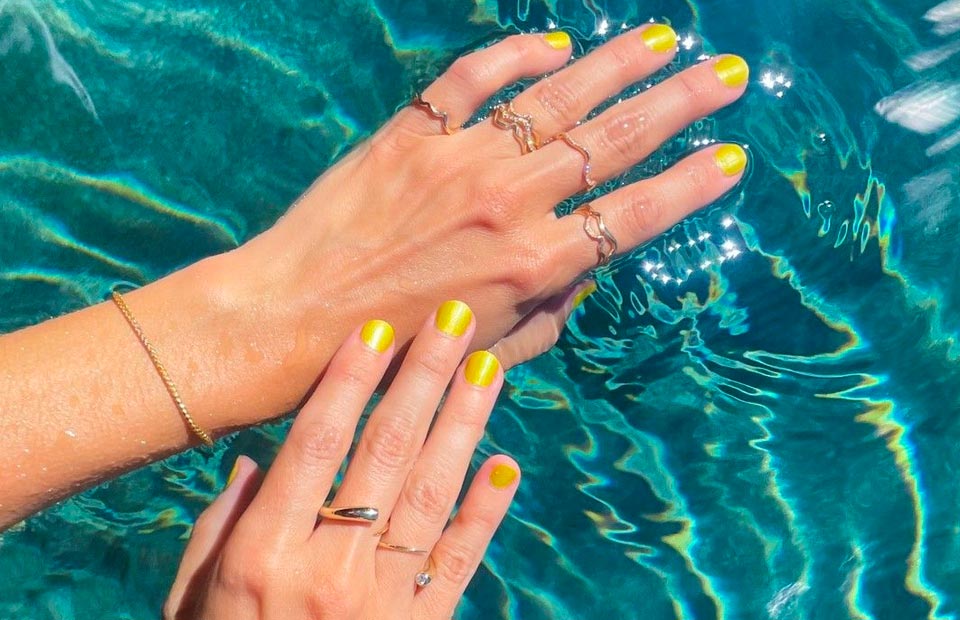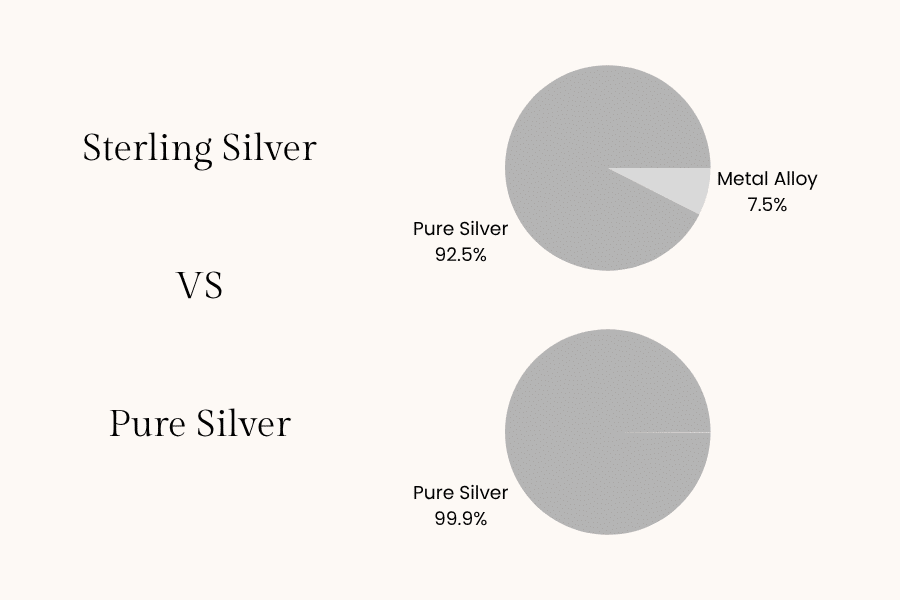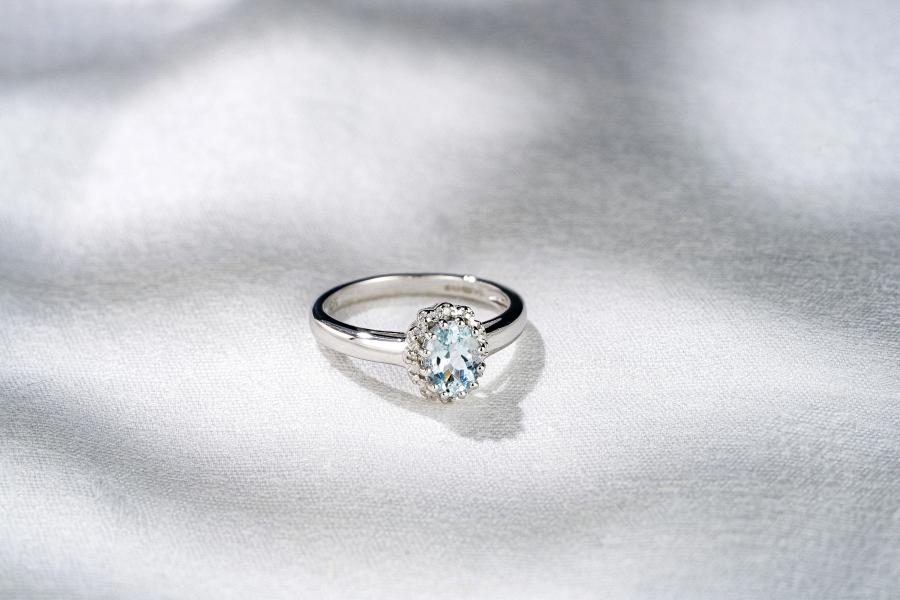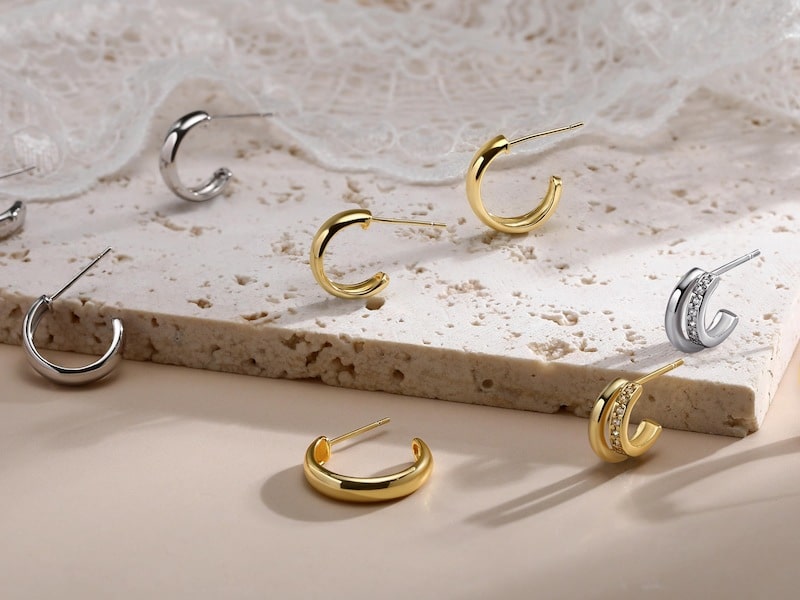There is a popular notion that water and metal jewelry are not the best of friends, as it’s believed that water damages your jewelry. The safety of swimming with your jewelry in the pool is dependent on the type of material used to make the jewelry. Water isn’t the only component that spoils your jewelry, the chemicals used to treat water play a huge role in the damage.
For more information, in this article, we will dive deeper into the world of jewelry, looking at the ideal pool-safe jewelry.
Join us as we continue.
What is the Pool Safe Jewelry?
There are limited options when it comes to jewelry that can be safely worn in the pool. The best choices are pieces made from non-corrosive metals, which won’t tarnish, rust, or degrade in chlorine water. Stainless steel and gold-filled or solid gold jewelry are the most commonly recommended due to their durability, affordability, and resistance to pool chemicals. Other metals like platinum, aluminum, and titanium are also pool-safe, but they’re less commonly used in everyday fashion jewelry due to their higher cost or limited design versatility. For style and practicality, stainless steel and gold-filled options remain the go-to choices for water-friendly accessories.
Does Pool Water Damage Jewelry?
Pool water itself poses less risk to your jewelry, rather it’s the various chemicals added to the pool that causes much damage.
The main chemical in pool water is chlorine, which is used to clean the pool. If your jewelry is made of copper or zinc, the chlorine reacts with it, causing corrosion and reducing the shine and luster of your jewelry.
Generally, when you expose your jewelry to water for a long time, it’s bound to have discoloration, making your fine piece not last long.
How about Jewelry in Salt Water?
Salt water is composed of many elements, including salt and various minerals like magnesium, sodium chloride, and calcium. These elements must not come in contact with your jewelry, which is why you must remove your jewelry before jumping into the ocean.
However, there are a few jewelry that can withstand salt water. They include sterling silver, solid gold, platinum, and stainless steel.
Can You Swim in Gold Jewelry?
There are different grades of gold jewelry, ranging from 10-24 karats. The higher the karat, the safer it is for swimming. Lower karat gold jewelry is composed of pure gold and susceptible metals like copper, zinc, silver, and nickel, making them prone to tarnish in the pool. The chlorine in the pool water will attack the susceptible metals, thereby causing your jewelry to tarnish and corrode.
Thus, if at all you want to swim in gold jewelry, ensure it’s a higher karat gold jewelry crafted by a professional custom jewelry manufacturer. If not, remove it before diving into the pool. Supposed you wear a lower karat gold jewelry and forget to remove it while swimming, gently wash it when you are done with a non-abrasive cleaning agent.
Can You Swim in Gold-Filled Jewelry?
Swimming in gold-filled jewelry is not the best decision. This is because gold-filled jewelry is made by bonding a layer of gold onto a base metal, usually brass. While the gold layer is bonded to be tough and resistant to damaging agents, prolonged exposure to water can be disastrous. This becomes worse if it’s worn in a water treated with chlorine. The gold layer will wear off, causing the jewelry to be damaged.
Can You Swim in Gold-Plated Jewelry?
Like gold-filled jewelry, it’s not advisable to swim in gold-plated jewelry. It is made by electroplating a thin layer of gold onto a base metal, which could be silver or copper. When your gold-plated jewelry is exposed to water, especially chlorinated water or salt water for a long time, the gold plating will wear off.
Can You Swim in Stainless Steel Jewelry?
Yes, you can swim in stainless steel jewelry. Stainless steel is highly resistant to rust, corrosion, and tarnish, making it one of the best materials for swimming, whether in a pool, lake, or ocean. It holds up well against chlorine, saltwater, and prolonged moisture exposure, unlike softer metals that can degrade over time. Its strength, affordability, and low maintenance make it ideal for active lifestyles. Just give it a quick rinse with fresh water after swimming to keep it looking shiny and new.
What Kind of Jewelry is Waterproof?
Who says you cannot add some glam and sparkle to your look when swimming? All you need is to wear waterproof jewelry that doesn’t tarnish or corrode easily.
Let’s explore the common waterproof jewelry you can wear when swimming:
Sterling Silver Jewelry
Sterling silver jewelry is a beautiful piece that’s formed through a mixture of pure silver and other metals like zinc, copper, and nickel. Sterling silver with rhodium plating is waterproof silver jewelry, though NOT 100% pool-safe, but yes they can resist light splashes of water.
Pure silver, in its original form is very soft, making it unsuitable for creating intricate pieces. It gets damaged, scratched, and lose shape easily. Hence, why it is alloyed with other durable metals to increase its strength and resistance to damaging agents. However, sterling silver contains more of pure silver: 92.5% of pure silver and 7.5% of other metals.
While the composition of sterling silver makes it waterproof, it’s worth mentioning that the jewelry is timeless and easy to care for. Thus, you can wear your beautiful piece every day in any environment, including water.
In all of this, it’s important to note that prolonged exposure to pool water that is chlorinated can cause your sterling silver jewelry to tarnish as time passes. Therefore, it’s best to reduce how often you swim in it to maintain its appearance and quality.
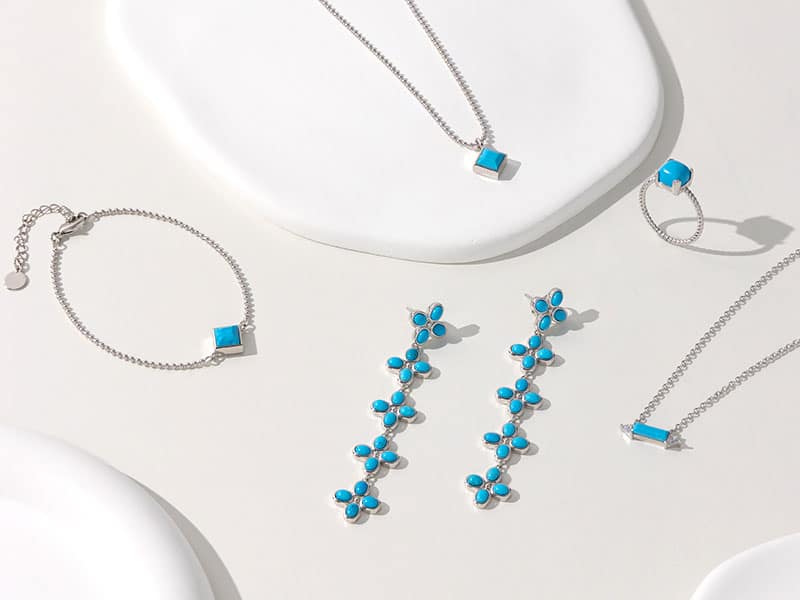
Solid Gold Jewelry
Just as sterling silver, solid gold is coined from the alloy of pure gold and other metals. Pure gold (sometimes called real gold or fine gold), is soft and unsuitable for making jewelry, especially intricate pieces. Hence, why it is mixed with other durable strong metals.
There are different grades of solid gold, measured in karats:
- 10K: Contains 41.7% pure gold and 58.3% other metals.
- 12K: Contains 50% pure gold and 50% other metals.
- 14K: Contains 58.5% pure gold and 41.5% other metals.
- 18K: Contains 75% gold and 25% other metals.
- 22K: Contains 91.7% pure gold and 8.3% other metals.
Solid gold doesn’t wear off or change color due to its low reactivity, and this can be attributed to its composition of pure gold and other metals. While solid gold is waterproof, higher karat gold like 18K and 22K are more trustworthy. They can be trusted to maintain their shine and authenticity when exposed to water.
Lower karats gold, on the other hand, will lose their lustrous shine and sparkle, especially when worn in water for a long time. For more information for gold’s waterproof quality, check our detailed guide on waterproof gold jewelry.

Gold-Filled Jewelry
If you like solid gold, but can’t wrap your head around why it has a huge price tag, the perfect alternative to go for is gold-filled jewelry. It shares various similarities with solid gold, including strength, durability, and waterproof.
But unlike solid gold jewelry that’s made by alloying pure gold with other metals, gold-filled jewelry is made by chemically or mechanically bonding at least 5% of pure gold onto a base metal, typically brass.
One of its biggest advantages is its waterproof quality. Gold-filled jewelry is sweatproof and showerproof. Besides, it is safe to wear in both the swimming pool and the ocean. While it can handle frequent water exposure, it’s still best to dry your jewelry thoroughly after swimming to extend gold filled jewelry’s lifespan.
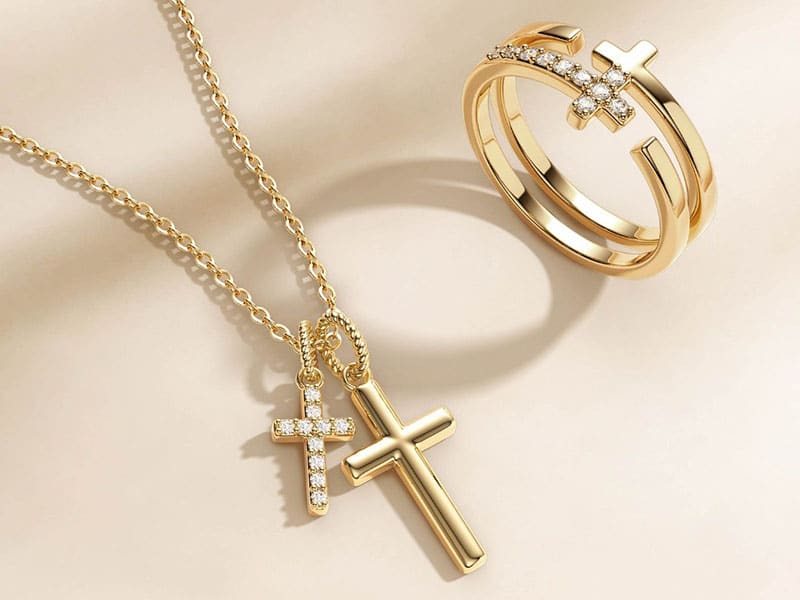
Gold Vermeil Jewelry
In recent years, gold vermeil has grown to be one of the best jewelry to withstand water contact. Unlike gold-filled jewelry that uses a brass base, gold vermeil is crafted with a sterling silver foundation and coated with a thick layer of solid gold through electroplating.
Because sterling silver provides strength, and gold offers brilliance and corrosion resistance, the two combined make gold vermeil both beautiful and practical. Any jewelry recognized as gold vermeil must comply with these requirements:
- The base metal must be sterling silver, which consists of 92.5% pure silver and 7.5% other metals.
- The electroplated gold layer must be at least 10K gold.
- The electroplated gold layer must be at least 2.5 microns thick.
With these regulations in place, gold vermeil jewelry is less likely to fade, tarnish, corrode, or wear off due to water contact. So, how waterproof is gold vermeil jewelry? It’s sweatproof, showerproof, and safe to wear in both swimming pools and the ocean. Besides, it’s best to rinse and dry your gold vermeil pieces after swimming to maintain their shine and extend their lifespan.
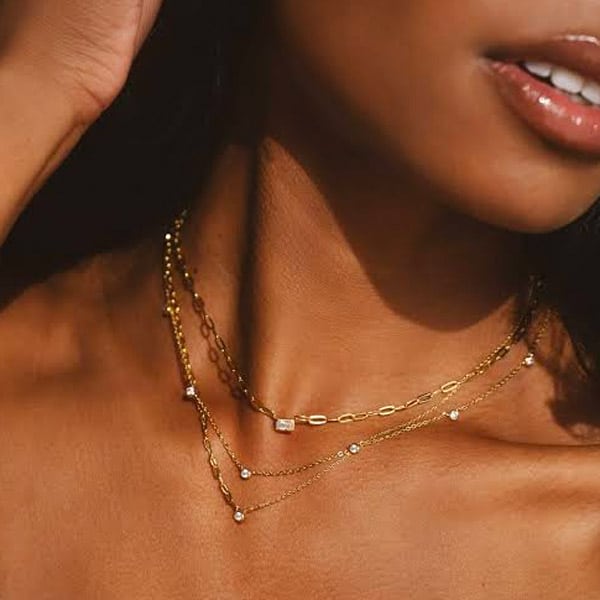
Stainless Steel Jewelry
Stainless steel is made up of various compounds, such as carbon, nickel, manganese, molybdenum, iron, chromium, etc. One of the most essential elements in the makeup of stainless steel is chromium, which must be at least 10% of the total composition. Chromium makes stainless steel waterproof. When your stainless steel jewelry is exposed to water, chromium reacts with oxygen to form a hard, thin, and resistant oxide layer that stops moisture.
Stainless steel unique composition makes it capable of withstanding corrosion longer than most metals when exposed to extreme conditions. It encompasses all the characteristics you need for an attractive yet waterproof piece. It has a clean, shiny finish, and it’s very durable.
If you are looking for a jewelry that’s not only sturdy and waterproof, but also pretty and affordable, stainless steel is your go-to. It makes you stay fashionable in and outside water.

Key Takeaway
Looking great shouldn’t be restricted outside the pool. With pool-safe jewelry, you can make a style statement and look radiant when swimming in pool water.
In this article, we’ve explored the various pool-safe jewelry that are waterproof and can be worn to swim. However, it’s imperative to mention again that pool water is often treated with chlorine, which impacts the shine and lifespan of all jewelry. So, don’t expose your beautiful ornaments to chlorinated water for a prolonged time.
Do you need more insight into this topic or will like to get a durable piece that can be worn outside and inside the pool, feel free to contact us. Our experts are on desk to attend to you!
